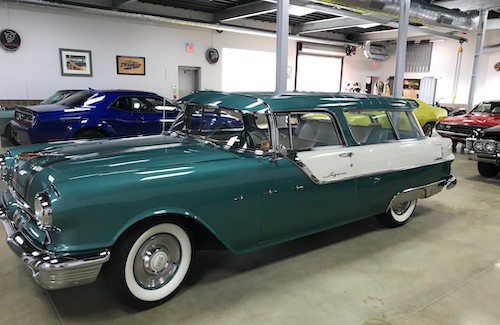The Problem

Garages require adequate ventilation to remove motor vehicle odors and a significant quantity of outside (“fresh”) air helps mitigate odors while also providing superior indoor air quality (IAQ). This large amount of outside air also presents a moisture removal/dehumidification challenge during warm, humid outside conditions and traditional HVAC equipment requires considerable energy to remove moisture.
The AirGreen Solution
The owner sought to deploy the AirGreen technology in order to pre-treat the requisite outside air in order to meet requirements for air circulation as well as provide dry, comfortable conditions. In this instance, all of the outside air would be pre-cooled and dried using the AirGreen equipment prior to being circulated and further cooled by two standard rooftop air conditioning units (RTUs). The AirGreen equipment can (and did) handle most of the cooling and dehumidification during mild weather, and the RTUs did not need to run at all. In very warm weather, the RTUs would “kick in” to provide supplemental cooling when needed. Furthermore, the capacity of the AHU’s were downsized as a result of the AirGreen installation, reducing some capital costs.
As one of AirGreen’s first installations, it provided a platform to demonstrate its unique capabilities, which was augmented by a full suite of IoT controls, which allow for remote monitoring and automatic adjustments from daytime to evenings and weekends, changing outdoor conditions, and whether the space would be occupied or not.
The AirGreen units were fit into two small mezzanines, which presented a considerable spacing challenge. As the AirGreen equipment can be broken up into modular components, the designers were able to locate the AirGreen A/C and dehumidification module on the mezzanine located on top of the restrooms, and the water source heat pump and the AirGreen regenerator were located on the mezzanine located on top of a small storage area. The dry cooler used to shed heat energy during hot weather conditions was located outside on the roof of the building, near the small RTUs.
Using AirGreen as a Heating Solution

Testing and comparison of this overall approach in similar outdoor cold weather conditions demonstrated that the RTUs only need to provide supplemental heating for only about 6 hours out of 54 hours of continuous operation (10.7% of the time) during a period where the average outdoor temperature was approximately 49oF while maintaining indoor conditions at 68oF. This allowed for substantial energy savings. We’re not sure this approach has ever been successfully demonstrated before, but it certainly works in this case.
Working With AirGreen
As this was an early-stage demonstration project, AirGreen was able to be directly engaged with the designers, the construction team, and the architect early in this project to best lay out where the AirGreen equipment should be located, while not interfering with the purpose of this facility, and to protect its unique and special vehicles. Normally, equipment to do this work could not be split into modular components, but the AirGreen technology is designed to do just that.
